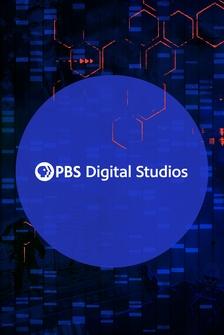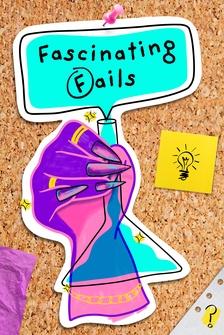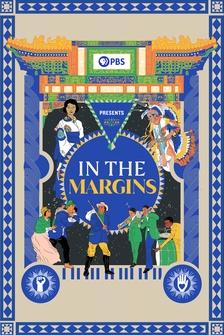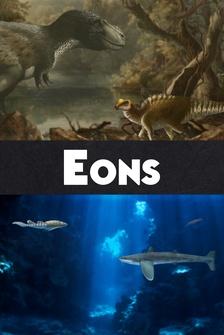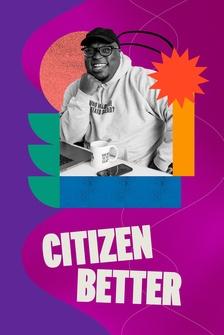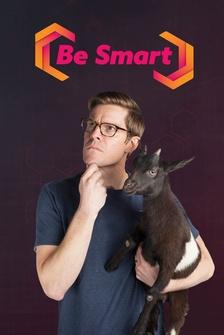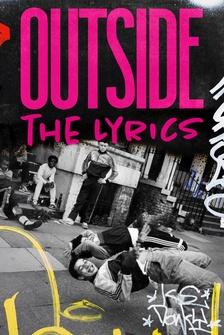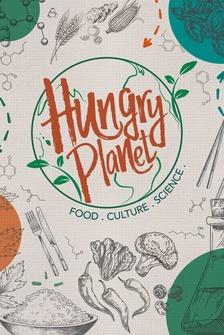- Ew.
- Ew.
Oh, that is nasty.
- [Cait] Destroying plastic might look like child's play.
It looks kind of like melted chocolate.
But it is actually serious business.
- [Malika] Do not try this at home, kids.
- [Arlo] And today, we are getting into the chemistry of how we make, and break.
- [Cait] That was left-handed, too!
- [Arlo] Plastic.
- [Cait] All the way back down into the small molecules that make it.
This is what happens when the scientist walks away!
(crew laughing) You know it.
We know it: Plastics are just about everywhere.
We use them to create children's toys, clothing, appliances, water bottles, food containers, the list goes on and on and ON.
And so today we're in the lab with Malika Jeffries-EL.
- It's pretty gummy and gooey right now.
- [Cait] To get a sense for how all these plastics are formed.
Is making plastics as fun as making LEGO towers?
- [Malika] Yes.
(laughs) - [Cait] And, more importantly, how we break them down.
Bye-bye LEGO!
- [Arlo] But first, let's talk about what plastics actually are, on the molecular level.
What exactly makes a plastic, well, a plastic?
- [Cait] Turns out, Plastics are actually massive molecules, called polymers.
So, what is a polymer?
- [Malika] I think one of the good analogies for a polymer is I always tell students to think about a pearl necklace.
The pearl represents the monomers, or the small molecules that we use to make polymers, but the necklace itself will represent the polymer.
The fact that they're strung together, or linked together with each other, is what changes everything.
- [Cait] The interconnected nature of these small molecules to make big molecules is what makes plastic durable.
But now, that durability has become the core of a massive plastic problem.
- Certain types of plastics can persist for decades.
But I bet you ask the kids behind us and they'll probably still see some 1940s early polymer hanging around.
- [Cait] Since the invention of synthetic polymers, we have produced over nine billion tons worth of plastic!
At this point, Earth is covered in plastic that doesn't break down easily.
- [Malika] Yeah let's crank up the heat.
- [Arlo] Here in Malika's lab, we're learning about how some plastics can be broken down and reused.
- Ooh, they're getting melty.
- Yep, they're getting melty.
- [Cait] Yes, there's actually a reason we're melting toys.
- [Arlo] I feel like this is a grim version of "Toy Story."
- [Cait] I think that makes you Sid.
(Sid laughing) - You mean that happy child?
(Arlo and Sid laughing) - [Malika] I always did this crap when I was a kid, my mother was always worried I'd burn the house down.
- [Cait] A lot of plastics we use in our daily life, like these toy soldiers, are what chemists call thermoplastics, meaning they can be melted and reformed.
- [Cait] Whoa!
Look at them polymers.
In other words, this is one way plastics can be recycled.
- [Malika] Just like this, this is how you could recycle and make it a fiber.
- [Cait] And so that's how we recycle, it's not like we're making new plastic, it's returning the plastic into a different shape.
- [Malika] Yeah, we're getting it into a more malleable, a softer form in which we can manipulate it, and then we can turn it into something else.
- [Arlo] But simply melting down and re-molding plastics doesn't solve the problem.
First of all, a lot of plastics we do recycle just don't get through the process.
- I think the average consumer would be surprised to learn what a low percentage of the materials that they put diligently into a blue recycling bin actually get recycled - [Arlo] The US doesn't have infrastructure in place to properly sort and recycle many types of plastic at the scale we need.
So, huge quantities of plastic are often exported to other countries, who have now started to crack down on this form of waste dumping.
- Why were we burning the energy and fuel to barge over plastic halfway around the world to another place, like?
- But it also speaks to the fact that the US never actually came up with a local strategy for what to do with these materials.
We need a local strategy.
- [Arlo] And what's more, not all plastics are easily recyclable.
There may be mixed materials.
And some plastics are actually designed to be tossed in the trash.
- [Cait] So, can we engineer plastic to just not stick around for quite so long?
Nowadays, more alternative green plastic solutions are on the rise.
So let's talk about these guys When you order takeout, chances are you might have received your food in a plastic container that says compostable or biodegradable.
- Compostable plastic is a great example of how scientists are now designing for our materials to have a shorter life cycle.
- [Cait] One of the most popular kinds of biodegradable plastic is called PLA.
- PLA is poly lactic acid.
- [Cait] PLA breaks down easily in the presence of hot water.
- [Malika] So the problem with these is when you pour hot liquids into them.
- [Cait] Whoa, look at that!
It just shrunk right up!
- [Malika] Yeah, it doesn't hold it's shape.
Which is a good thing if you want to make a recyclable material, but it's a bad thing if it happens before you finish your beverage.
- [Cait] And there are some other hiccups.
For example, these plastics don't biodegrade all that well in the normal environment, or in landfills.
And they often can't even be properly handled by normal recycling plants.
- [Cait] So if I buried this in my garden, would it break down?
- [Malika] You'd like to think so but even they have a warning here that says that it requires a specialized facility so a regular person can't put it in their backyard.
- [Cait] And it's tough to break these plastics down to the truly molecular level.
In the process we end up creating a harmful byproduct, microplastics.
- So microplastics come from the subtle degradation of larger pieces of plastic.
- [Cait] Plastic fragments smaller than five millimeters in length, about the size of a grain of rice, are classified as microplastics, and they are everywhere.
- You know it, passes through our water streams, they end up in lakes and oceans.
They end up in our fish, and so people are really concerned about the implications of accumulation of plastics in bioorganisms.
And a lot of it's not understood yet.
- [Cait] While researchers are still studying microplastics, there is significant evidence that they can have harmful effects on our environment, and potentially even impact human health.
- [Arlo] Ting Xu at UC Berkeley is one of the researchers currently looking at ways to make these biodegradable plastics, well, truly biodegradable.
The goal is to break down the materials in a way that doesn't harm the environment.
- The key is to degrade into something that can be subsequently handled by the ecological system.
You cannot introduce another problem by solving a problem.
- [Arlo] Ting's lab is working on a solution that could help certain plastics.
degrade completely back into their monomer molecules in less than two weeks.
PLA plastic is one of the kinds of plastic they are modifying.
- So this is a poly lactic acid plastic film.
It is actually pretty tough.
And then what we do is just bury them in the dirt.
After six days, they are going to turn to pieces.
If you bury it for two weeks, you would not even find them - [Arlo] This research involves improving the recipe for biodegradable plastics by taking some inspiration from bacteria.
- We know the bacteria can digest food.
So what bacteria use is enzyme to chew things up.
So the enzyme essentially is a catalyst.
- [Arlo] Ting's process takes this enzyme, which is just a protein, and embeds it in the plastic.
- We wanted to blend the enzyme in there, disperse it nanoscopically, such that it's not going to change the whole plastic property.
- [Arlo] In the end, the enzyme is dispersed throughout the plastic.
- The black dots shown here are actually our enzymes, and you can see how they're nice and dispersed all across the film.
- [Arlo] This means, even little bits of microplastic will still have a nearby enzyme eating it apart, back down to its small molecules.
- If you want to draw an analogy, if you play a game with Pokemon and you see it biting things.
Pac-Man or Pokemon, what is it called?
- [Arlo] I think it might be Pac-Man.
- Pac-Man.
I just like that cartoon, I learned it from my son.
All right, let's do it again.
It's essentially like a Pac-Man.
Here is polymer chain.
You want it to bind at the polymer chain end and take a bite, one bite a time.
- [Arlo] Ting's lab's data, which was recently published in "Nature," shows that the enzyme actually breaks the plastic all the way back down into its constituent monomers.
With researchers like Ting working on inventive solutions, there is hope that we can reduce and perhaps eventually eliminate future plastic waste, by creating plastics we can truly, and responsibly dispose of in our environment.
- I would say going forward, any material being designed, should have the environmental impact, toxicity, sustainability, in mind before they go forward.
It's our responsibility for our offspring or for generations for years to come.
As a polymer scientist, we made the mess, we have to clean it up.
- [Cait] And researchers, like Malika, who understand how materials like polymers work in the world, can use their knowledge to promote a better, more sustainable, future.
- And I feel like scientists are gonna be like, challenge accepted.
Like, okay, let think about this, give me some time, some money, some resources, and I am confident that scientists will get that problem solved, they'll get it done.
- [Cait] Now that you've seen how we break plastic, wanna see how to make different plastics?
Check out NOVA's 3-part documentary series, "Beyond the Elements," where Host David Pogue investigates the molecules all around us, from the indestructible, to the molecules of life, to the Reactions that transform our world.
You can find it on the PBS video app.




